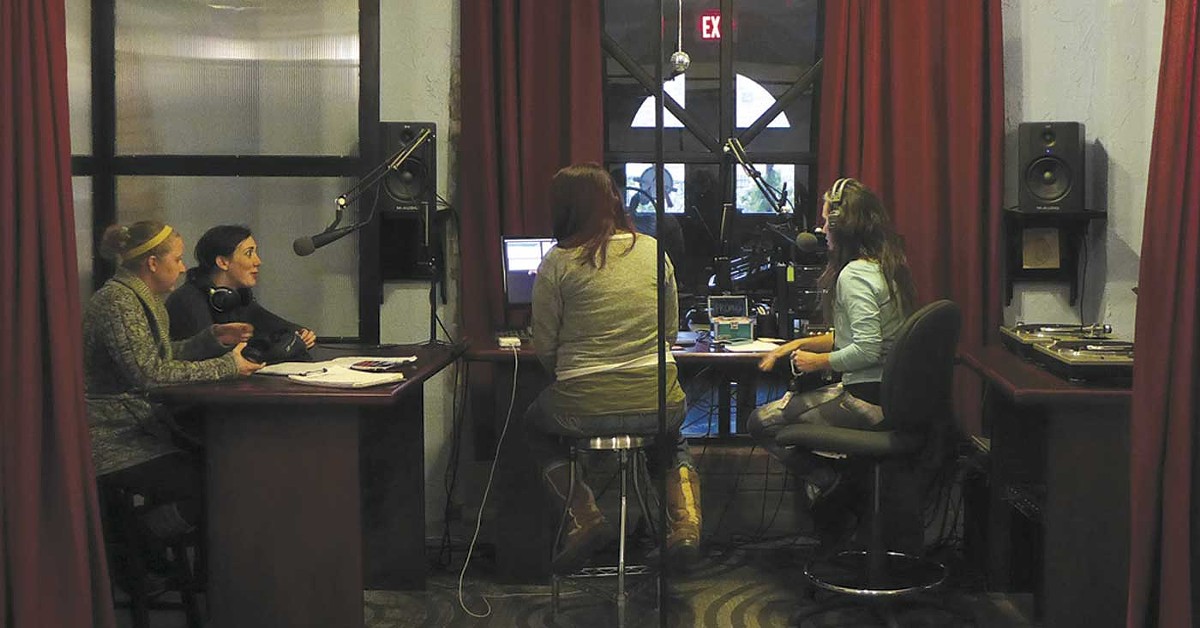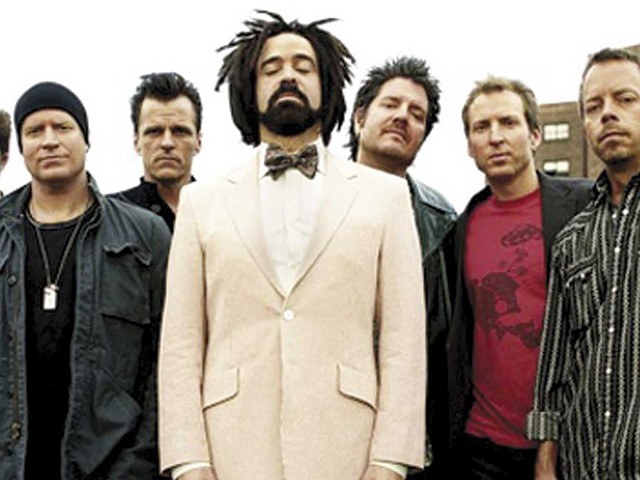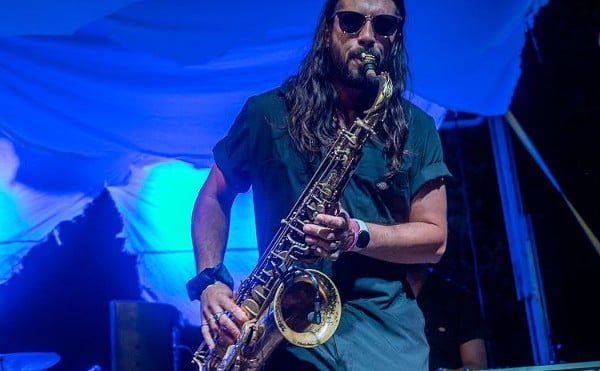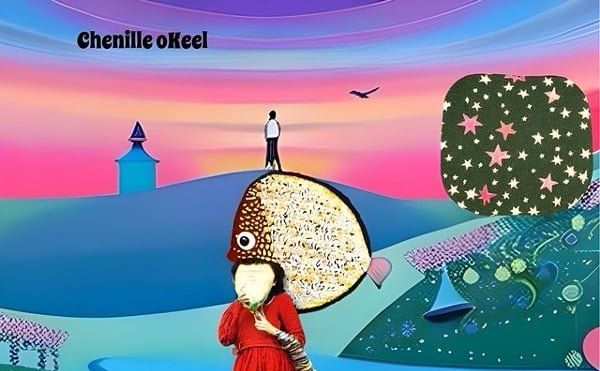Since its inception in the early part of the 20th century, radio has commanded an unparalleled place of cultural power. The narrative of the apocalyptic radio broadcast — a staple in our contemporary “prepper” zombified zeitgeist — reveres radio as the most imminently durable and reliable technology. In countless pop culture references (from “Under the Dome” to “Walking Dead”), radio is the last voice of the people, the last available communication tool capable of saving civilization.
With four local stations recently awarded their FM broadcast licenses, Louisville is finally seeing the effects of the 2011 Local Community Radio Act, which made dial space accessible to Low Power FM (LPFM) stations and opened up the playing field to voices outside corporate and National Public Radio. That it has taken so long for the airwaves to become available to diverse public voices speaks to the economy of a medium long outpriced and regulated beyond grassroots reach.
A Tale of Four Stations Each of Louisville’s four new community radio stations has its own vibe and mission. Located at 100.9 on the FM dial with call letters WCHQ, Crescent Hill Radio, the first so far to utilize its LPFM license, is located in a cozy nook off Frankfort Avenue, a tiny basement studio that lends itself, but is not restricted, to the tamer side of local music: bluegrass, folk and singer-songwriter fare. There isn’t much to the space, so every inch counts. The small basement studio makes clear that the station keeps a low overhead, both literally and figuratively, a clear bid to keep the lights and the station going in service to the community. Station manager Karen Weisbach recalls of her humble beginnings, “I started CHR with a simple playlist and a computer in March of 2010. Just kind of a hobby, I started an audio stream on the Internet. I began by playing music that my friends and folks I knew had recorded. As a musician myself, I was well aware of how hard it is to get your music any airplay, after you and fellow bandmates have poured so much time, energy and money into creating a recording. I made the website CrescentHillRadio.com and started a Facebook page both with links to play the stream.”
From there it blossomed, a reflection of both the technology that allowed for an efficient and streamlined broadcasting system and the support of the community. Weisbach recalls, “Once the word got out about what I was doing, and that I was only playing local music, I started receiving so much local music that I was overwhelmed. People started approaching me with ideas for shows and wanting to be DJs. I set up an area in the basement of my home, and we started doing a couple of live broadcasts. Later we built a studio in the basement of a building on Frankfort Avenue, complete with a sound studio. We acquired lots of shows, live and pre-recorded. Many great people have joined the team. In 2011 when I read about the possibility of Low Power FM in urban areas, I started working toward that goal. And now, being on the FM dial makes us much more accessible to the community.”
Located in Nulu, ARTxFM was off to a similar start. Spearheaded by ARTxFM general manager Sharon Scott, the station found its beginnings almost on a whim when she and a small band of friends and volunteers came up with the idea to do an Internet-based radio station. Scott explains, “ARTxFM was born out of a need to open the airwaves to artists and community members for experimental programming. My husband Sean Selby and I put the first studio together in the living room of our Highland’s home. Here we conducted many radio art experiments and trained our first volunteer DJs. ARTxFM made its public broadcasting debut in the lobby of the Kentucky Center at IdeaFestival 2012.”
The energy in the air at NuLu’s ARTxFM studio is palpable. The room is large and open with a few areas set aside for computers. The curtained DJ booth is off-center to the room, looking into what is now the Earth Friends Café. The equipment is sparse, but suited perfectly to the needs of the station. Behind the booth is a wall of records that is public domain for all DJs at the station. Like Crescent Hill Radio, while ARTxFM is not specifically aimed at music, it is undeniably the central tenet to their programming structure, which supports eclectic music, ranging from punk and indie to African jazz, funk and dub, all curated by local enthusiasts.
FORward Radio is a counterpoint of sorts, offering politically-minded talk radio programming, the new kid on the block that once in operation intends to offer local arts coverage. According to their website, FORward Radio is part of the Fellowship of Reconciliation, which operates “in pursuit of peace and social justice.”
Their mission statement explains that “An independent media is the cornerstone of a truly free and just society. Independent, community-based Low Power FM (LPFM) radio stations are a platform to ensure that the diversity of local voices are heard and the public interest is served. However, because of the structure of our country’s media and federal regulations, community based media has been restricted in recent years. That structure is changing, and right now is a vital chance to strengthen the voice of our community.”
Located in an otherwise unassuming building, Vault 1031 is first and foremost an art space, literally a former vault now converted into a theatre and studio space. Like FORward Radio, Vault 1031 has an interest in promoting a diverse community voice through programming beyond music. The open space for the theater is pregnant with possibility, the thrill of a performance yet captured; it’s easy to see why the operators of the Vault would turn to radio as part of their overall artistic vision.
Still, unlike the other three community stations, Vault 1031 never intended to get into radio. According to co-artistic director Jon Huffman, it sort of fell into their lap. He recalls, “We had no intention, originally, no inkling, of going into radio. Then we realized that The Armored Car Company left us one of the tallest radio towers in the county, on our roof. That was our impetus for applying for a license. We partnered with Spalding University, our neighbor, in applying, and were as surprised as anyone when our license was approved.”
But they’re eager to get caught up. Huffman notes, “We are madly learning everything we can now about radio. So our lineup is still undetermined, both the programming and the personnel, though we have a lot of solicitations for programming from which to choose. The FCC sets certain quotas we have to follow: how many hours on-air, how many hours per week must be dedicated to children’s programming, etc.”
The emergence of the LPFM some 80 years after the birth of commercial radio is a testament to both the importance of radio as a viable and everlasting medium, and to the economy of the landscape. Each new station has faced its own unique struggle in finding the funding for the requisite equipment, often at great personal toll to the people involved, not to mention with an enormous amount of restriction. Weisbach explains, “The FCC has very strict rules about underwriting and what defines an advertisement versus a recognition of money donated.”
These restrictions, both economic and bureaucratic in nature, have been stumbling blocks to LPFM for years, and have allowed corporate and public radio to thrive without any real competition. But there is no doubt that there is a need for a true community voice, be that music curated by local musicians or public figures, or talk radio aimed at addressing local issues. To that, Pete Tridish, a former member of the pro-LPFM radio activist group Prometheus Project, states simply, “LPFM is a crucial means of reclaiming some of the broadcast spectrum. LPFM represents a renewed appreciation of local voices, public access and participation in community broadcasting.
Radio restrained Until recently, government limits on radio broadcast licenses made operating a Low Power FM community station impossible. In 1934, the Federal Communications Commission (FCC) was formed to monitor both the content and frequency location of rapidly proliferating radio stations. Given the technological capabilities of the time, the FCC’s solution to interference among radio stations and concern over the interests of a morally-rigid citizenry was a tight restriction on the number of broadcast licenses it would make available. From 1934 to 1996, the radio waves were strictly regulated, split out on the dial at larger intervals to avoid any possibility of overlap.
Scott explains, “The Telecommunications Act of 1996 eliminated a cap on the number of radio stations one entity could own nationwide and in individual markets. Since that time, large companies have swallowed up smaller operations and replaced local programming with nationally homogenized shows. According the Future of Music Coalition, ten companies now own two-thirds of America’s airwaves. In a country as diverse as ours, the music is suddenly all the same and the on-air discussion rarely changes. Even non-commercial radio, the traditional safe haven for local programming, is becoming increasingly monolithic with Public Radio affiliates spreading out across the dial, gobbling up college frequencies nationwide.”
Although the Telecommunication Act of 1996 resulted in corporate-dominated air waves, it was the first step to making airwaves available to a wider audience, albeit it at a cost. Ultimately, it opened the door for the creation of the Low Power FM radio service that grants specific rights to community radio stations regulated by several factors, though most notably their available wattage, which is the amount of power allowed to their transmitter, a determining factor in how wide their broadcast area is.
Weisbach elaborates, “Low Power FM has been around since 2000, but President Barack Obama signed The Local Community Radio Act of 2010 into law on January 4, 2011. Basically, it eliminated “third-adjacent minimum distance separation” requirements between Low Power FM stations and full-service FM stations, FM translator stations, and FM booster stations. This made it possible to squeeze in some LPFM stations between existing full power stations, where before it was not possible inside Louisville, and most other urban areas. Before this last amendment to LPFM, mostly only rural areas were able to have community radio stations.”
Likewise, Scott understands the power of the LPFM and what impact that will have on the community. She notes, “The FM band is limited. ‘Beach front property,’ some would say. Until the passage of the Local Community Radio Act, there was no room for new stations in mid-sized cities like Louisville. Low Power stations are squeezing into tight spots on the FM dial. At the moment, they are the only new frequencies available. Should something more powerful open up, we would certainly pursue the opportunity.”
“Beach front property” indeed: Paying for all the equipment necessary to running a powerful radio station — a lucrative investment with advertising — has largely been a privilege of corporations or nonprofit conglomerates, who often owned a number of operations per broadcasting area. For example, according to their website, the media giant Clear Channel/iHeart Media owns 850 stations in 150 markets in America, a sizable portion of the market. To put that in perspective, according to the FCC’s website, there are 17 FM stations in Louisville, including the four newly granted LPFM licenses, and 8 AM stations for a total of 25 stations. Clear Channel/iHeart Media owns 8 of them, or 32 percent in total. And that’s just one media conglomerate alone.
‘Community’ or ‘public’ radio Pete Tridish, who knows a thing or two about community radio, explains the difference between public and local radio noting, “Community stations are centered around volunteer programmers. They draw the bulk of their programming from local people who come in to the studio and produce content for the sheer love of it. There is very few paid staff, and those there are mostly in the roles of keeping the bills paid, coordinating volunteers, problem solving and fundraising. Shows are everything from Balinese gamelan music to science podcasts to youth shows to local labor talk.”
He continues, “Public radio is totally different. The majority of content is produced at a national level by professionals, and sold to the stations. The stations then raise pledge dollars to pay that bill. Most public stations (except the very biggest in NYC and LA and Chicago) have only a handful of shows that are produced locally; most of the day is “Car Talk,” Terry Gross, “All Things Considered,” etc.”
But Todd Mundt of Louisville Public Media sees it much differently. He explains, “In some ways, NPR stations aren’t that different [than community radio]. We are all non-commercial and non-profit and we exist to serve the public interests. Louisville Public Media stations are actually a kind of community radio because we are a community license, governed by a board of members chosen from the community, rather than, say, operated by a university. Public radio’s only major differences are that the stations are generally more powerful (by which I mean they transmit over a wider geographic area) than community stations, and they have a larger professional (as in, paid) staff. But public radio’s roots are community radio.”
Still, Scott is cautious of that appraisal. An alum of Vanderbilt University, Scott spent her formative years as a DJ at WRVU 91.1, what was then the college radio station. That is until the local NPR affiliate, which had only one station in Nashville, opted for a hostile takeover. Scott explains, “The folks at Nashville Public Radio (NPR) betrayed us. Their engineer and station manager had been hired ‘advisors’ to WRVU for several decades. In 2010 these very individuals approached the Vanderbilt administration and convinced them that students speaking their minds on an FM station was a serious liability for the university (not true). Nashville Public Radio then offered Vanderbilt $3.25 million to relieve them of this liability.”
Mundt remains persistently optimistic that the past won’t repeat in Louisville though and believes there is ample room for everyone to participate, so long as there remains no logistical interference on the dial that is. He explains, “NPR and many other broadcasters don’t oppose the idea of community radio. They oppose what they are concerned will be FM radio interference because too many stations will be operating on a crowded FM radio band. This is complicated but FM radio stations need to be geographically separated in very exact ways so the signals don’t interfere with each other. The FCC relaxed the rules to add more stations, which creates the potential for stations being heard on top of other stations. NPR opposed this relaxation of rules.”
He adds optimistically, “Very few existing stations have experienced this problem. Louisville Public Media supports LPFM community stations because there is room on the FM dial for them here, and after all, we are community radio, too.”
Putting the ‘community’ in radio The differences between community, public and corporate radio stations are undeniable, if in some instances a bit blurry. Ultimately though, community radio is the most direct path to granting a local voice to the radio waves. Scott believes in the power of community radio to give voice to the public. She explains, “Without the ability to communicate, communities lose the ability to celebrate their victories and govern their municipalities. It is the unfortunate truth that so many American cities have sacrificed local on-air voices for nationally-syndicated programming, underwriting schedules and automated playlists.”
She adds positively, “Community radio creates space for individuals to express themselves and discuss the issues that are important personally and relevant locally. Through this discussion, many issues can be tackled and problems can be solved; people can be mobilized and laws can be amended. Free access to radio is critical to democracy and is a powerful tool for change.”
Huffman certainly agrees with Scott in the power of community radio. He believes, “Most radio stations on our dials these days have zero community involvement, beyond some local news—if that. The programming is mostly designed and distributed from locations far away. I think there are times when radio listeners really want to hear about their own town, their own neighborhood, and their own community. Small-town radio stations used to broadcast news about local residents and the events in their lives, even who was in the hospital and why. They would broadcast news about local events, local tragedies and local triumphs in a way that made their neighbors feel close to one another. Listeners felt connected to their communities, in much the same way people connect today with social media. I think of community radio as a kind of retro 21st century extension of that connectedness.”
It’s through that interconnectivity that community radio is on the rise. Since the signing of the Local Community Radio Act, there has been an exponential growth in local stations with new stations obtaining their license every week. In Kentucky, there are 53 total LPFM stations. Until early October, only two of those were near Louisville, 92.7 WFHS-LP and 88.1 WNAS in New Albany, both high school stations. Of the 53 listed stations listed statewide, 15 have formed since October, not counting any of the new Louisville stations, a 28 percent increase within the last two months.
Why the sudden growth? Weisbach believes, “There is a lot of movement toward local efforts in general, like local food and farmers markets, and local entertainment. I think the variety in types of music and programming that people are looking for now has helped too.”
Between the local LPFM stations working together and organizations like the Prometheus Project or the National Federation of Community Broadcaster, there really is a growing community, both locally and nationally, developing. Mundt believes that public and community radio have plenty of reasons to collaborate. He admits enthusiastically, “There are so many opportunities! We can discover new ideas for stories, discover new local talent, and we could work together on projects. LPFM stations may serve a few thousand people in a neighborhood or two, which gives them the ability to really focus on their audience in a way we can’t (since we serve an area with a population of more than a million) and we have resources and some kinds of expertise, too. I’m sure there are ways we can work together.”
There is no doubt that corporate or public radio have their place on the dial, but the idea that there is not enough room to support community radio is antiquated, if not dishonest. The technology supports the cause, giving voice to the public in a way unprecedented to the medium. We live in an age with a growing number of available media options. If you want a television show, you can look to public access to make whatever you want to your heart’s content, you can do virtually anything with the Internet, and if you want print media you can just make it. You can even release your own records or movies with the right funding. It is well beyond time that community radio is afforded the same opportunity, that it is made available to the public for use to those willing and able, not just to those select few with the fiscal means or political access.
* * *
Crescent Hill Radio WCHQ 100.9 FM The only station currently up and running, Crescent Hill Radio offers a variety of local music ranging from bluegrass and folk to punk and hardcore, as well as in studio or on location live broadcasts. Highlights include the “Keep Louisville Loud” midnight show, “From a Basement on a Hill” and the “Danny Flanigan Song Swap,” all of which emphasize not only local sounds, but local performance in some way, captured live and sometimes even filmed, available online.
ARTxFM WXOX 97.1 The home for the weirder side of Louisville, ARTxFM hosts a variety of programming that ranges from world music to local indie and punk and everything in between. Shows like “Alien Jingles,” “Club El Rancho,” “ClifTones,” “Dark Entries” and “Keep Louisville Literary” illustrate just how wildly diverse each program is from one another, and exactly how broad our community voice really is. Expect to hear them on your dial in the near future.
FORward Radio WFMP 106.5 Your stop for community-voiced political talk radio, FORward Radio offers hourly coverage of all things social and political. You can expect to hear plenty of local social activism and long form storytelling, Louisville’s community radio answer to NPR shows like “This American Life” or “Fresh Air.” Programming like the “FORsooth Hour,” “Democracy Now!” and “2 Angry Buds” exemplify the sort of shows available here, each providing their own unique voice on issues germane to our local interests.
Vault 1031 Radio WEAV 92.5 Unmistakably the new kid on the block, Vault 1031 has all the making of a great station, but nothing yet. Whereas every other station granted their license had preexisting Internet radio programming, Vault 1031 only had a vision and the means to pull it off with theater and community art space included. First and foremost, expect radio dramas and theater to dominate their programming when they go live, an exploration of storytelling through a non-visual medium.






